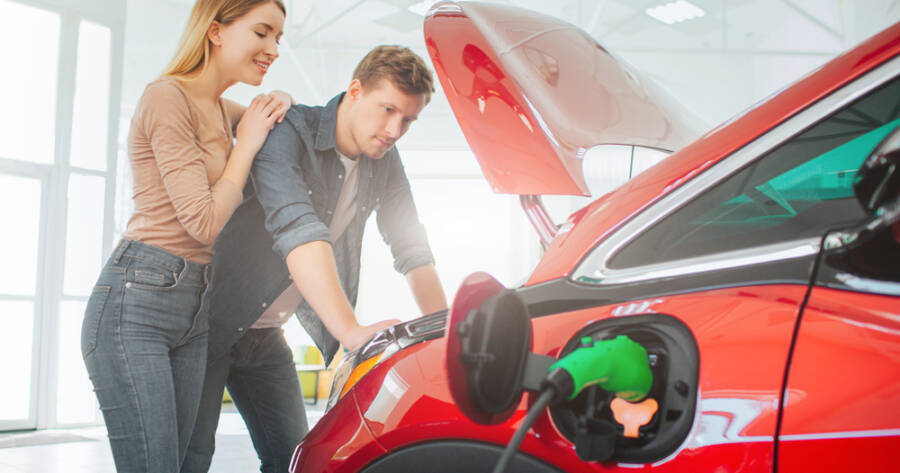With the electric vehicle (EV) market booming and more models entering the secondhand scene, many budget-conscious drivers are considering used EVs as a smart alternative to new, pricey models. However, buying a used EV isn’t quite the same as purchasing a conventional gasoline car. Electric vehicles come with unique components—like battery packs and charging systems—that require a closer look before you sign on the dotted line.
If you’re in the market for a secondhand EV, find out what you should know to help you navigate key considerations like battery health, charging compatibility, depreciation, and warranty coverage.
Battery Health: The Heart of the EV
The most critical—and expensive—component of an electric vehicle is its battery. Over time, EV batteries degrade, gradually losing capacity and range. Unlike a gasoline engine that may last hundreds of thousands of miles with proper care, an EV battery’s lifespan depends heavily on usage patterns, charging habits, climate exposure, and age.
What to check:
-
State of Health (SOH): Many EVs can report battery health via onboard diagnostics or through third-party tools. SOH is a percentage representing how much usable capacity remains compared to when the vehicle was new.
-
Battery warranty: Most EVs come with warranties that last 8 years or 100,000 miles. Check if the vehicle is still under this coverage.
-
Range loss: Compare the current range (from the seller or through a test drive) with the vehicle’s original EPA-rated range to gauge degradation.
Tip: Avoid vehicles with frequent use of DC fast charging, which can accelerate battery wear if used excessively.
Charging Compatibility and Infrastructure
Before you commit to a used EV, consider how it will integrate with your lifestyle and local charging options. Charging standards and speeds vary by manufacturer and vehicle model, which can affect how conveniently and quickly you can power up.
What to check:
-
Charging port type: Ensure the EV supports charging connectors compatible with your home or local public chargers. For example, most EVs in North America use the J1772 standard for Level 2 charging, but newer models may adopt the NACS (Tesla) connector.
-
Level 2 compatibility: Look for support for Level 2 charging, which is ideal for home installations and faster than standard 110V charging.
-
DC fast charging capability: Not all EVs support fast charging. If you frequently travel long distances, this may be a dealbreaker.
Installing a home charger or verifying access to local charging stations can make a used EV more convenient and practical.
Depreciation: An EV’s Unique Curve
While depreciation is a concern for any used vehicle, EVs follow a different curve than traditional cars. Some EVs—especially early models with limited range—lose value quickly, but that also makes them affordable for secondhand buyers. More recent EVs with higher ranges and better tech tend to hold value longer.
What to check:
-
Model reputation: Look at how well the specific make and model has held value over time. Some, like Teslas, retain value better than others.
-
Battery condition vs. mileage: A low-mileage EV with a degraded battery may be worth less than a high-mileage one with a strong battery warranty.
-
Incentives impact: Many new EVs benefit from government rebates, which artificially lower their cost and can influence resale values. Consider how these may have impacted the price of the used EV you’re eyeing.
While depreciation can be a benefit for buyers, ensure the discount doesn’t come with costly hidden compromises.
Warranty and Support
Unlike gas-powered vehicles, EVs rely on proprietary software and electronics that may require specialized service. Understanding what’s covered—and what isn’t—under remaining warranties can help prevent unexpected expenses.
What to check:
-
Battery and powertrain warranty: As mentioned earlier, most EVs have extended warranties for batteries and electric components. Confirm what’s still active.
-
Bumper-to-bumper warranty: These typically expire sooner (3 years/36,000 miles), so check what’s left.
-
Transferability: Some warranties may not transfer to a new owner, especially if the vehicle was bought used once before.
-
Software updates: Ask whether the vehicle still receives manufacturer software updates or if access is limited due to previous ownership changes.
Also, investigate where you can get the car serviced. Not all local mechanics are equipped to handle EV maintenance and diagnostics.
Know Before You Go
Buying a used EV can be a financially and environmentally smart choice, but it requires a slightly different approach than buying a used gas-powered car. By carefully assessing battery health, charging compatibility, depreciation, and warranty status, you’ll be better equipped to make an informed, confident decision. A well-maintained secondhand EV can provide years of reliable, low-emission driving—without the sticker shock of a brand-new model.

